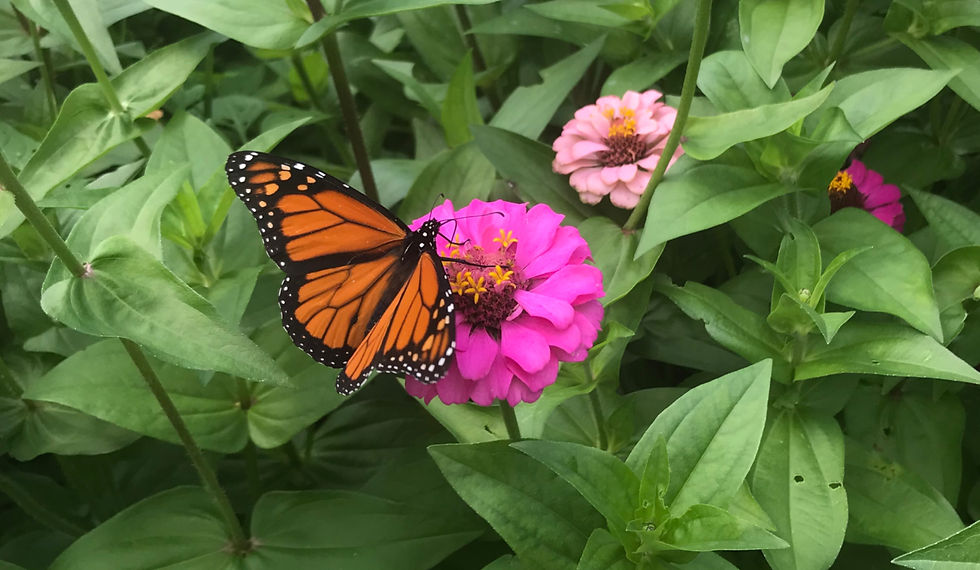East
- Lee Erickson, MA, LPCC

- Sep 1
- 3 min read
by Lee Erickson

Grief rarely leaves us with neat images or comforting narratives. More often, it settles in the smallest details — a crooked collar, a chair left askew, the way a foot refuses to point in the “right” direction. These fragments stay with us, snagging in memory, refusing to let go.
When I wrote East, I found myself circling back to one such detail: a foot twisted toward the rising sun. It became more than just something I noticed at a small chapel at a church in Central Minnesota. It turned into a symbol of all that grief does — twisting, coiling, pulling us toward what’s already gone, even as the sun rises again.
For me, writing this poem was part of how I began to carry the unbearable. I couldn’t make sense of loss in its entirety, but I could hold on to one image, let it speak back to me, and see what truths unfolded. In the act of writing, I realized that grief and renewal are not opposites; they live beside each other, blooming and breaking in the same breath.
This poem wrestles with what it means to witness, to stay present when silence and shadows carry more weight than words. It asks how renewal and anguish can coexist, and why some things — in life and in grief — refuse to turn.
East
by Lee Erickson
His left foot was pointing east,
east like where the sun rises.
And as he was dying, I budded.
When he died, I bloomed.
It seemed strange to see him
lying there on a gurney,
in his faded, rumpled, striped gray suit.
He was never a suit person.
The fabric hung awkwardly,
too loose in some places, too tight in others.
Shoes too casual—childlike,jarringly absurd.Grief rose like radio static
attempting to tune to a station
once lodged in my throat.
The trouble it must have been to dress him—
button trousers, knot the tie,
when he could no longer help.
But they couldn’t keep his foot from facing east.
It was twisted at an unnatural angle,
a detail that snagged in my mind,
refusing to let go.
His head,
wrapped in white gauze,
unseen, even in death.
Even in life, he felt invisible—
as if unseen was easier, safer.
Who could bear to look?
Who could sit in that indifference?
We couldn’t see the wound,
so
it lived in every shadow,
in every silence,
in every glance.
His left foot was pointing east.
It was all over,
and still—I stayed to witness.
And in that moment of anguish,
I understood the weight of renewal,
the way grief twists,
coils inside you,
unable to face the light.
Some things refuse to turn,
pointing only to what’s already gone.
His foot stayed twisted—
unbending,
even now.
And on the next rising sun,
and those thereafter,
a brother brightened—
slowly turning—
blooming into the sting
of severance,
an ache
without end—
a resonance
stripped of static—
echo.
Writing Prompts for You:
Think of one small, physical detail connected to your loss (an object, gesture, or image). Write about why it won’t leave you — and what it says about the grief you carry.
Write about something that felt “out of place” at a funeral, hospital room, or moment of grief. How does that detail reveal what words couldn’t?
Where in your grief have you noticed both breaking and blooming happening at once? Describe how those two experiences coexist in you.
Disclaimer: The content shared here reflects my personal thoughts and professional insights, but it is not therapy. If you are struggling or in crisis, please call 911, go to your nearest emergency room, or dial 988 in the U.S. (Suicide & Crisis Lifeline). If outside the U.S., please seek local emergency resources.





Comments